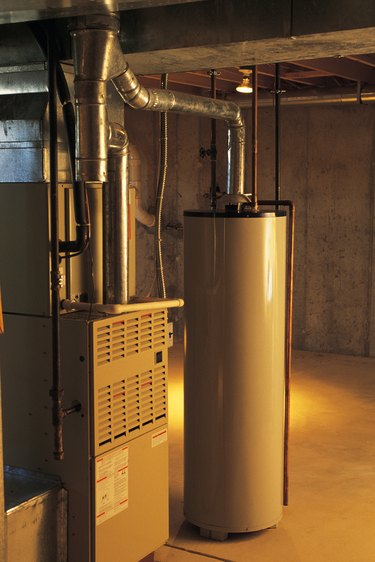
A furnace, especially a blower, uses a lot of energy to function properly. Gas that enters the furnace is ignited by the pilot light. Burners heat air entering the furnace. The furnace blower blows hot air through the duct system of the home. Extra energy is required to power the blower, so it's connected to a capacitor that works like a battery. It stores the extra energy needed to kick the blower into action. A faulty blower will exhibit many signs and symptoms.
No Power
Video of the Day
A faulty capacitor may prevent the blower from functioning at all. Before checking the capacitor, make sure the fuse controlling the furnace is flipped to the "on" position. If the furnace is receiving power, turn up the thermostat, and see whether the blower motor starts within the next few minutes. If not, the capacitor or the blower motor is not functioning properly.
Video of the Day
Sound
Turn up the thermostat for the furnace, and wait for the furnace blower to start up. Open the access panel to the furnace using a screwdriver. Lean close to the housing of the furnace blower, and listen for a loud humming sound. This is a sign of an electrical problem with the capacitor. If the humming does not stop, the capacitor should be tested.
Intermittent Motor Function
A faulty capacitor will not be able to hold the charge necessary to run the blower motor properly. This will cause the motor to run slowly, causing excess heat. Excessive heat in the motor can cause the motor to malfunction. If you notice your furnace's motor cycling frequently, you should test the capacitor.
Testing the Capacitor
Shut off the power to the furnace at the fuse. Remove the blower housing inside the furnace to access the capacitor. The capacitor will still hold a charge, even without power. Remove the wires from the terminal, and discharge the capacitor using the instructions included with your furnace. Set a voltmeter to the X1 setting. Look for the voltage rating on the side of the capacitor. Touch the probes from the voltmeter to the terminals of the capacitor, and see if the voltage matches the rating. Replace the capacitor if the voltage does not match.